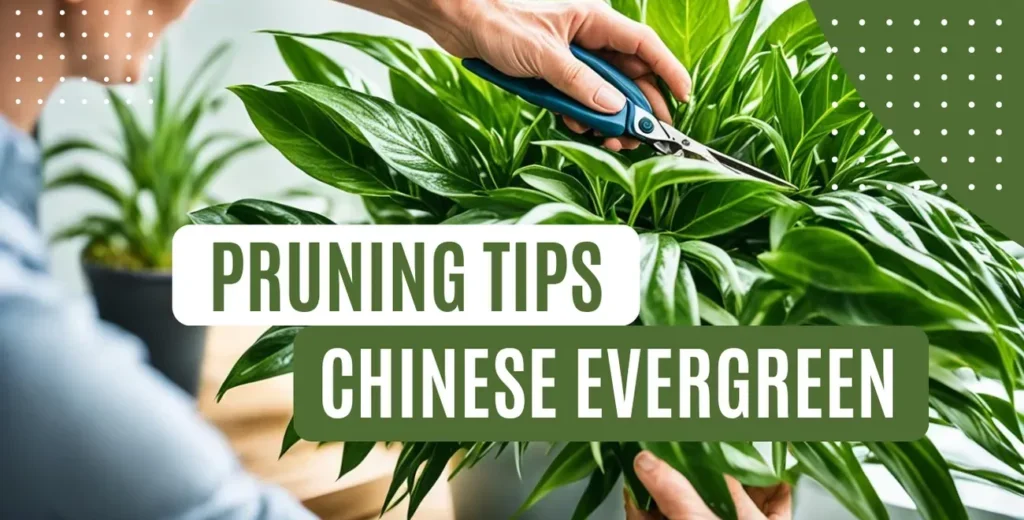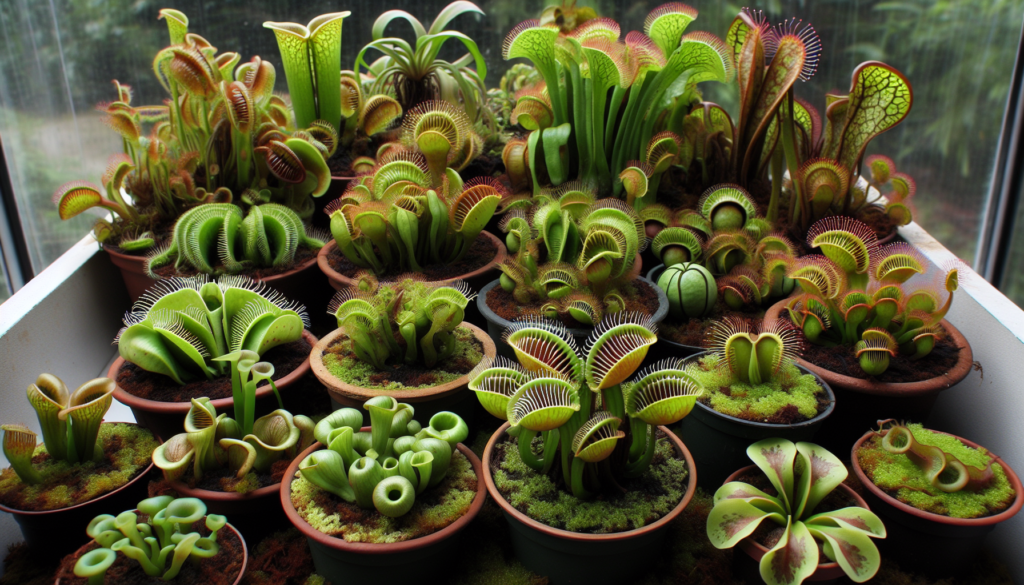Trim yellow or damaged leaves and cut back leggy stems to encourage bushier growth in Chinese Evergreens.
Learn how to prune your Chinese Evergreen with key tips for promoting lush growth and maintaining its health. This guide covers the necessary techniques and tools to help your plant thrive, making it a stunning addition to your indoor garden regardless of your gardening experience.
Understanding Chinese Evergreen Plants

Before we delve into pruning techniques, let’s take a moment to understand Chinese Evergreen plants. These beautiful foliage plants are known for their lush green leaves and easy-care nature, making them a popular choice for indoor gardens.
Chinese Evergreen plants, scientifically known as Aglaonema, are native to the tropical regions of Southeast Asia. They belong to the Araceae family and are closely related to other popular houseplants like pothos and peace lilies.
With their striking patterned leaves and ability to thrive in low-light conditions, Chinese Evergreen plants are perfect for adding a touch of greenery to any corner of your home.
Chinese Evergreen plants come in various varieties, each with its unique characteristics and growth habits. The most common types include Aglaonema Silver Bay, Aglaonema Emerald Beauty, and Aglaonema Maria.
Some varieties have variegated leaves with beautiful patterns of silver, cream, or pink, adding an extra element of visual interest to these already stunning plants.
Benefits of Pruning Chinese Evergreen Plants
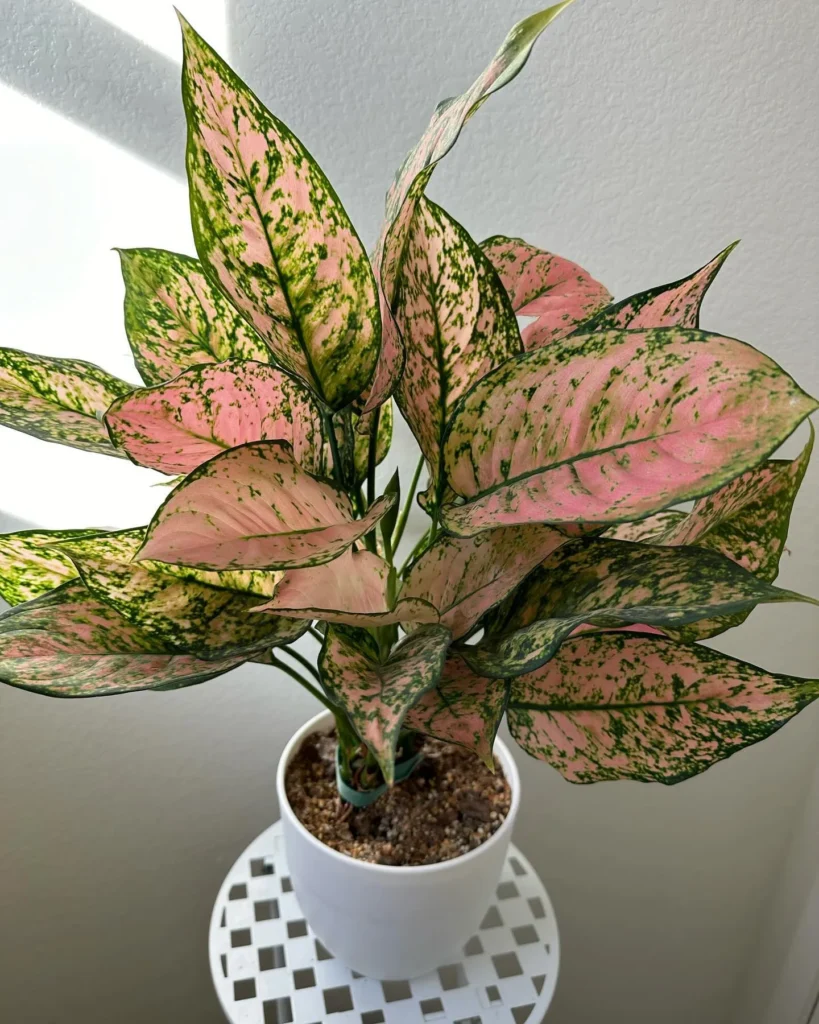
Pruning is an essential practice for maintaining the health and appearance of Chinese Evergreen plants. Regularly trimming and shaping your Chinese Evergreen offers numerous benefits that contribute to its overall growth and well-being.
Here are some key advantages of pruning your Chinese Evergreen plants:
- Encourages bushier growth: By removing dead or overgrown branches, pruning stimulates the growth of new shoots and foliage. This promotes a fuller and more compact appearance for your Chinese Evergreen.
- Enhances air circulation: Pruning helps improve air circulation within the plant, reducing the risk of fungal diseases and creating a healthier environment for growth.
- Prevents disease and pest infestation: Trimming away diseased or infested parts of the plant helps prevent the spread of pathogens or pests to the rest of the Chinese Evergreen.
- Shapes the plant: Pruning allows you to shape your Chinese Evergreen according to your aesthetic preferences. You can create a more symmetrical and visually appealing plant by selectively trimming certain branches.
- Promotes better light penetration: Removing excess foliage or overcrowded branches allows light to reach deeper into the plant. This ensures that all parts of the Chinese Evergreen receive adequate light for photosynthesis.
- Increases flowering potential: Proper pruning can stimulate the development of flower buds on certain varieties of Chinese Evergreen, enhancing their ornamental value.
When to Prune Chinese Evergreen Plants

Timing is crucial when it comes to pruning Chinese Evergreen plants. Pruning at the right time ensures optimal growth and prevents potential harm to your plants.
Let’s explore the best time of year to prune and the signs that indicate your Chinese Evergreen is ready for a trim.
Best Time of Year to Prune
Pruning Chinese Evergreen plants is typically done during the spring or early summer when the plant is actively growing. This period allows the plant to recover quickly and promotes healthy new growth.
Avoid pruning during the winter months when the plant is dormant as it may hinder its ability to heal and regenerate.
Signs Your Chinese Evergreen is Ready for Pruning
Observing your Chinese Evergreen carefully will give you clues as to when it needs pruning. Look for these signs:
- Overgrown Appearance: If your Chinese Evergreen has become leggy or is taking up too much space, it’s a good indication that pruning is needed to maintain a more compact shape.
- Yellowing or Brown Leaves: Dead or discolored leaves signify that your plant may benefit from a trim. These can be removed to promote new growth.
- Crowded Foliage: If the foliage is densely packed and inhibiting airflow, it’s time to thin out some leaves to improve ventilation and reduce the risk of disease.
Tools and Materials for Chinese Evergreen Pruning
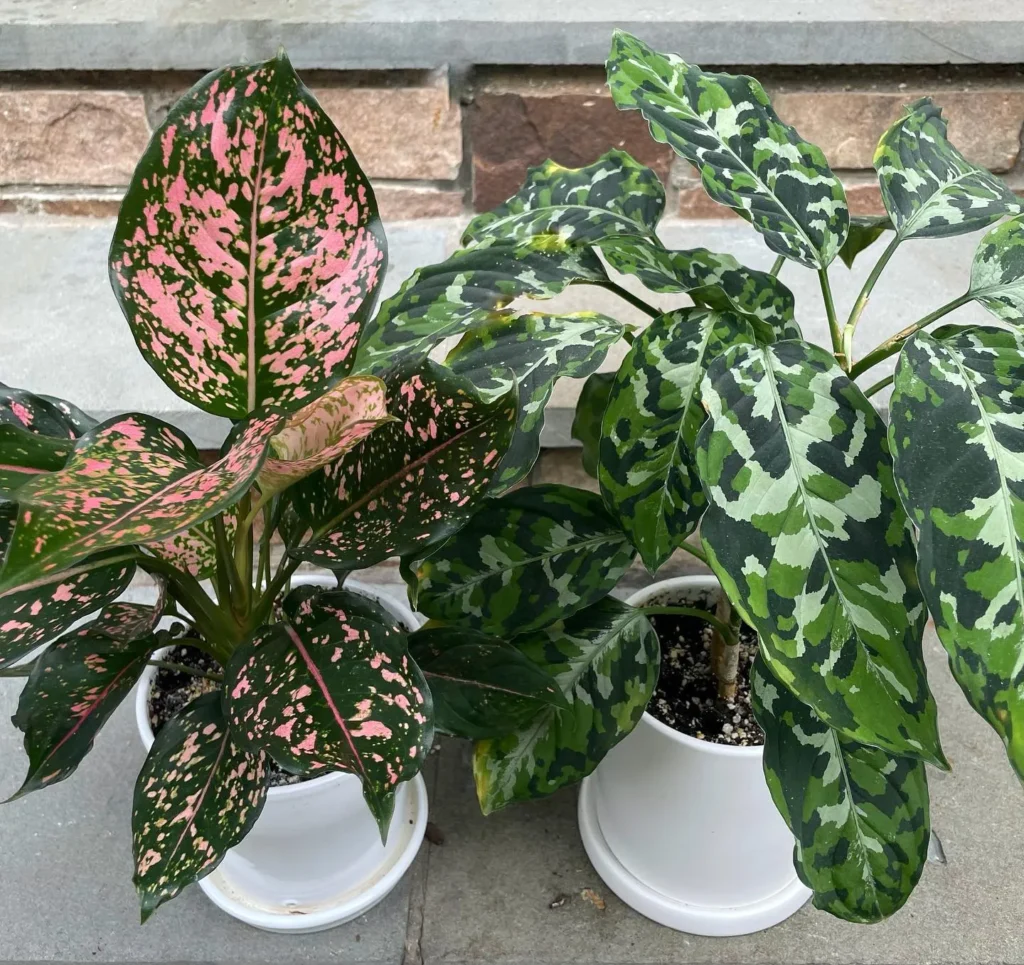
When it comes to pruning your Chinese Evergreen, having the right tools and materials is essential for achieving optimal results. With the correct equipment at your disposal, you can ensure a precise and effective pruning session that promotes the growth and overall health of your plants.
Here are some of the essential tools and materials you’ll need for successful Chinese Evergreen pruning:
- Pruning shears: Invest in a high-quality pair of pruning shears, preferably with sharp, bypass blades. These shears will allow you to make clean cuts without damaging the plant.
- Disinfectant: It’s crucial to disinfect your pruning tools before and after each use to prevent the spread of diseases or infections. Use a gentle disinfectant solution to clean the blades of your shears to ensure they’re free from harmful pathogens.
- Gloves: Protect your hands from scratches and potential irritants by wearing a pair of gardening gloves. Choose gloves that are comfortable, durable, and allow for a good grip on your pruning tools.
- Pruning saw: For thicker branches or larger plants, a pruning saw can be handy. Select a saw with a sharp blade that can safely and efficiently cut through woody stems.
- Watering can: After pruning, it’s essential to water your Chinese Evergreen to help it recover and promote new growth. Keep a watering can nearby to ensure a gentle and controlled watering session.
- Plant disinfectant: To prevent the spread of diseases and pests, have a plant disinfectant on hand to treat any wounds or cuts on your Chinese Evergreen. Follow the instructions on the product label for safe and effective use.
Basic Pruning Techniques for Chinese Evergreen

When it comes to caring for your Chinese Evergreen plants, mastering basic pruning techniques is key to promoting their health and appearance.
In this section, I will guide you through essential pruning practices that will help you create a visually appealing and vibrant indoor garden.
1. Removing Dead or Damaged Leaves
Regularly inspect your Chinese Evergreen for any dead or damaged leaves. These leaves not only detract from the plant’s beauty but can also signal potential health issues.
Using clean and sharp pruning shears, carefully snip off the affected leaves where they join the stem. Be sure to discard the removed leaves to prevent the spread of disease.
2. Shaping for Compact Growth
To maintain a more compact appearance and encourage bushier growth, consider shaping your Chinese Evergreen by pruning specific stems or branches.
Identify areas that appear leggy or overly long and trim them back to a desired bud or leaf node. By selectively pruning these areas, you can help the plant develop a fuller and more balanced silhouette.
3. Stimulating New Growth
If you want to promote new shoots and denser foliage, try topping or pinching your Chinese Evergreen. Topping involves removing the top portion of the stem, encouraging lower buds to grow and develop into new branches.
Pinching, on the other hand, entails using your fingers or pruning shears to pinch off the tips of the stems, which redirects the plant’s energy and encourages lateral growth.
4. Thinning for Airflow
To improve airflow around your Chinese Evergreen and prevent the onset of fungal diseases, consider thinning out crowded areas. Carefully remove excess branches or stems from the center of the plant, allowing for better ventilation and reducing the risk of humidity-related issues.
Remember to avoid over-thinning, as it can disrupt the plant’s natural balance.
5. Pruning with Clean Tools
Always ensure that your pruning tools are clean and sharp before beginning any pruning session. Dirty or dull tools can introduce bacteria or cause damage to the plant.
Wipe down your pruning shears with a disinfectant solution before and after each use, and sharpen the blades regularly for clean and precise cuts.
Advanced Pruning Techniques for Chinese Evergreen

Ready to take your Chinese Evergreen pruning skills to the next level? In this section, I’ll introduce you to advanced techniques that will help you rejuvenate older plants and propagate new ones. Let’s dive right in!
1. Air Layering
Air layering is a technique used to encourage root growth on a plant while it is still attached to the parent plant. This method is particularly useful for rejuvenating older Chinese Evergreen plants with leggy growth or for creating new plants from existing ones.
Here’s how to air layer your Chinese Evergreen:
- Select a healthy stem on the Chinese Evergreen plant that you want to propagate.
- Make a small horizontal cut on the stem, removing a thin strip of bark from around the stem.
- Apply rooting hormone to the cut area to stimulate root development.
- Wrap damp sphagnum moss around the cut section of the stem, covering it completely.
- Secure the moss with plastic wrap or a small bag, ensuring it remains moist.
- After a few weeks, roots will start to form within the moss. Once the roots are at least an inch long, carefully cut the stem below the rooted section.
- Plant the rooted section in a small pot with well-draining soil, keeping it moist until it establishes itself.
By using air layering, you can create new Chinese Evergreen plants without harming the parent plant, ensuring a continuous supply of lush and vibrant foliage.
2. Rejuvenation Pruning
If your Chinese Evergreen has become overgrown, sparse, or lacks foliage lower down on the stems, rejuvenation pruning can help revive its appearance and promote new growth.
Follow these steps to carry out rejuvenation pruning:
- Identify the stems that require pruning for rejuvenation.
- Using sharp pruning shears, cut the selected stems down to a height of about 3 to 4 inches from the soil level.
- Ensure the remaining stems have a balanced and symmetrical appearance.
- Water the plant thoroughly after pruning and place it in a location with bright, indirect light.
- Monitor the plant closely and provide proper care to encourage new growth.
Rejuvenation pruning stimulates the Chinese Evergreen to produce new shoots from the base, resulting in a fuller and more vibrant plant overall.
Pruning Tips for Common Chinese Evergreen Varieties

Different Chinese Evergreen varieties may require specific pruning techniques. In this section, I will provide pruning tips tailored to common varieties such as Aglaonema Crispum and Aglaonema Silver Queen.
By understanding the unique characteristics of each variety, you can enhance their features through proper pruning and trimming.
Aglaonema Crispum
Aglaonema Crispum, also known as the Chinese Evergreen Emerald Beauty, has vibrant green leaves with silver markings. To maintain its luscious appearance:
- Remove any yellow or wilted leaves by gently pulling them away from the base of the plant.
- Trim leggy stems to encourage bushier growth.
- Shape the plant by pruning the outer stems slightly shorter than the central ones, creating a fuller and more balanced look.
Aglaonema Silver Queen
The Aglaonema Silver Queen variety features stunning silvery-green leaves that add an elegant touch to any space. Here are some pruning tips specifically for this variety:
- Regularly prune any brown or damaged leaves to maintain the plant’s overall health and appearance.
- Trim long stems to encourage compact growth and prevent the plant from becoming leggy.
- Remove any overcrowded or crossing branches to ensure proper air circulation and light exposure.
Pruning Mistakes to Avoid
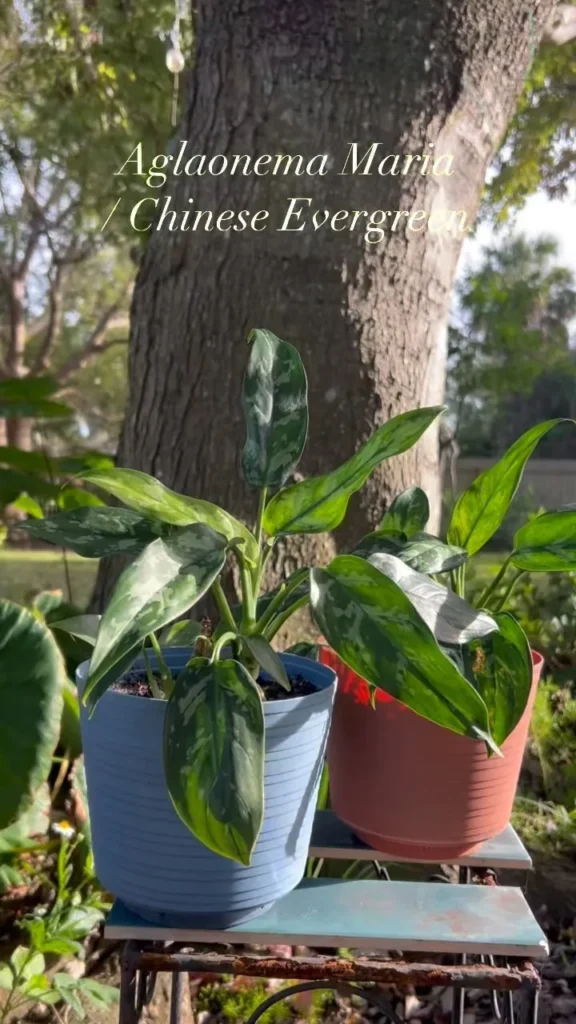
When it comes to pruning your Chinese Evergreen plants, even experienced gardeners can make mistakes that have unfortunate consequences.
Avoiding these common pitfalls is essential to maintain the health and beauty of your Chinese Evergreen. Let’s explore some pruning mistakes you should steer clear of and learn how to rectify them if they occur.
- Over-pruning: One of the most common mistakes is excessive pruning. While it’s important to shape and maintain your Chinese Evergreen, removing too many leaves or branches can hinder its growth. Avoid going overboard and aim for balanced pruning sessions that promote healthy foliage.
- Improper cutting technique: Another mistake is using incorrect cutting techniques. Always use sharp, clean pruning shears to make precise cuts. Avoid tearing or crushing the plant tissue, as it can lead to infections and damage the overall health of your Chinese Evergreen.
- Pruning at the wrong time: Timing plays a crucial role in successful pruning. Pruning your Chinese Evergreen at the wrong time can disrupt its growth cycle and leave it vulnerable to stress. It’s best to prune during the plant’s dormant period or when it shows signs of healthy new growth.
- Ignoring sterility: Neglecting to sanitize your pruning tools before and after each use can introduce pathogens to your Chinese Evergreen. Clean your tools with a disinfectant solution to prevent the spread of diseases and minimize the risk of infecting your plant.
- Rushing the process: Pruning requires patience and precision. Rushing through the process can lead to unintended consequences. Take your time to assess the plant, plan your pruning strategy, and execute each cut with care.
Aftercare for Pruned Chinese Evergreen Plants
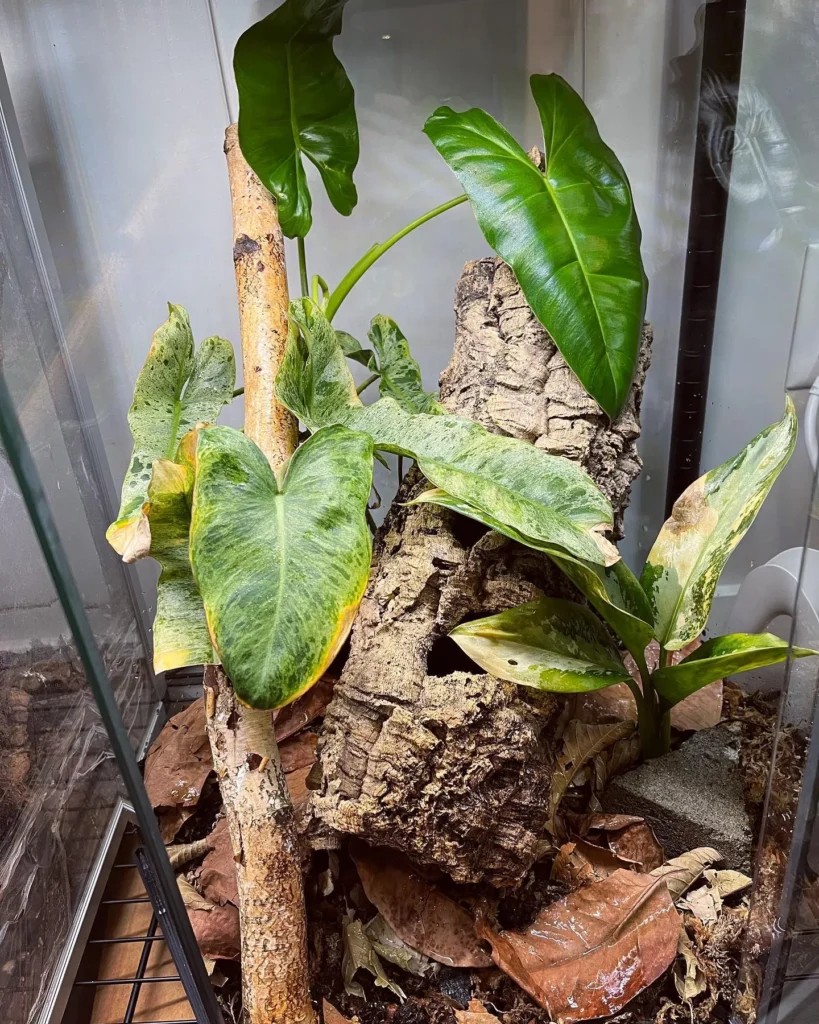
Now that you’ve successfully pruned your Chinese Evergreen plants, it’s time to focus on their aftercare. Providing proper care and support after pruning is essential for the continued growth and long-term health of your plants.
Follow these steps to ensure your pruned Chinese Evergreen thrives:
- Watering: After pruning, it’s important to adjust your watering routine to accommodate the plant’s new growth. Monitor the moisture level of the soil and water your Chinese Evergreen as needed, being careful not to overwater or let the soil dry out completely.
- Fertilizing: To support the growth of your pruned Chinese Evergreen, apply a balanced houseplant fertilizer according to the manufacturer’s instructions. Fertilize regularly during the growing season to provide the necessary nutrients for healthy foliage and vibrant leaves.
- Monitoring: Keep a close eye on your pruned Chinese Evergreen for any signs of stress or complications. Look out for yellowing leaves, stunted growth, or pest infestations. Taking prompt action in addressing these issues can prevent further damage and ensure the plant’s overall well-being.
Troubleshooting Pruning Issues with Chinese Evergreen
Despite my best efforts, pruning issues may arise with Chinese Evergreen plants. In this section, I will address common problems that can occur during or after pruning, such as yellowing leaves or stunted growth.
Let’s troubleshoot these issues and implement corrective measures to ensure your Chinese Evergreen thrives.
- Yellowing Leaves: If you notice yellowing leaves after pruning, it could be a sign of over-pruning or underwatering. Adjust your pruning frequency and ensure the plant receives enough water. Remember, Chinese Evergreen plants prefer slightly moist soil.
- Stunted Growth: Is your Chinese Evergreen showing slow or stunted growth after pruning? This might mean you’ve removed too many healthy leaves or stems, hindering the plant’s ability to photosynthesize. Allow the plant some time to recover and adjust its growth rate. Consider providing additional light to stimulate new growth.
- Wilting: Wilting can occur if the plant is experiencing excessive heat or drought stress after pruning. Ensure your Chinese Evergreen is in a suitable location with proper temperature and humidity levels. Monitor the soil moisture regularly and adjust watering accordingly.
Tips for Incorporating Pruned Chinese Evergreen Plants in Home Decor
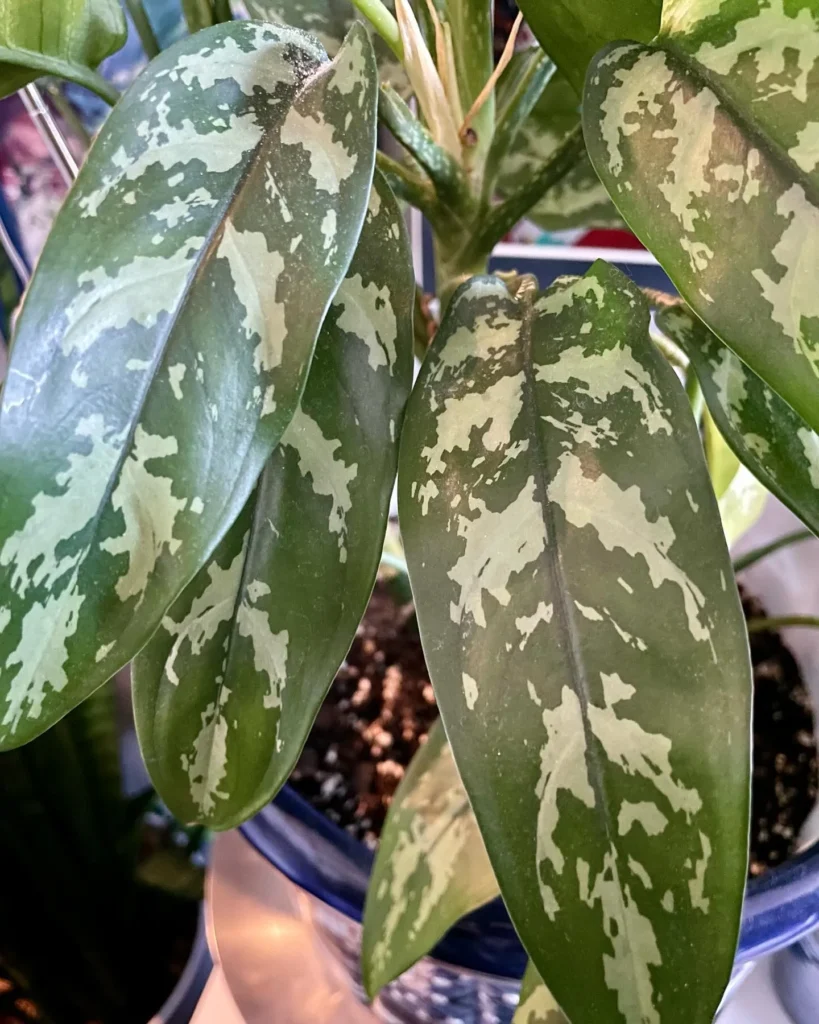
Now that you have successfully pruned your Chinese Evergreen plants, it’s time to bring them into your home and let them shine as a beautiful addition to your interior decor.
With a few thoughtful considerations, you can create a stunning display that showcases the lush foliage of your pruned Chinese Evergreen.
When it comes to containers, opt for sleek and modern designs that complement the elegant simplicity of your Chinese Evergreen.
Ceramic or terracotta pots in neutral tones provide a timeless look, while metallic finishes add a touch of contemporary flair. Consider the size of your Chinese Evergreen and choose a pot that allows room for growth.
Placement is key in home decor. Chinese Evergreen plants thrive in bright, indirect light, so position them near windows or areas with filtered sunlight. Avoid placing them in direct sunlight as it can scorch the leaves.
Additionally, Chinese Evergreen plants prefer a warm and humid environment, so keep them away from drafts or air-conditioning vents.
To create visual interest and balance, consider pairing your pruned Chinese Evergreen with other houseplants or decorative elements.
Low-growing foliage plants like pothos or ferns can provide a lush backdrop, while tall cacti or dracaenas add height and drama. Mix and match different textures and colors to create a harmonious display that suits your personal style.

